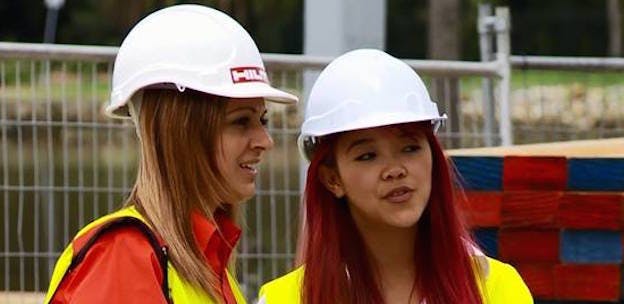When you imagine a construction worker, would you think of that person as male or female? It’s perhaps not necessary to state the assumed response to that question because we have been educated to pigeonhole men and women in particular industries. As a result, women are largely underrepresented across a number of industries in the trade sector with the total representation of women in Australia’s construction industry reported to be as little as 10 per cent.
And there is a problem here – because male dominated industries that employ fewer women are said to be prone to gender stereotyping which consequently makes it more difficult to for women to excel within their chosen field.
Gender-based stereotyping—and not fact-based information—often informs senior executives’ perceptions of men and women leaders and misrepresents the true talents of women leaders, contributing to the startling gender gap in business leadership (www.catalyst.org)
‘A perception that the industry wasn’t particularly ‘women friendly,’ and a lack of role models’
As The Department of Employment forecasts that employment in the construction industry is expected to grow by 13.1 per cent over the next 5 years, Dynamic Business speaks to Jennifer Bicknell, Director of the National Association for Women in Construction (NAWIC), about what she sees as a shift in outdated misconceptions. A shift that will see the construction industry increasingly accepted as a legitimate career option for ambitious women around Australia.
A lack of female role models, poor networking opportunities and a highly masculinised culture, are just some of the issues that have traditionally prevented women entering the construction industry.
Jennifer said: “There were education barriers, a lack of opportunities and awareness of opportunities, a perception that the industry wasn’t particularly ‘women friendly,’ and a lack of role models.”
Apprentice carpenter, Desiree Owens, told Fairfax Media “I’ve had a lot of people ask me what I am doing and said building sites aren’t for females – I think that would put a lot of females off.”
‘Businesses with female representation outperform those without’
But the problem is actually two-fold: not only have women been impeded from pursuing the wealth of career opportunities offered by the sector, but the sector itself has been deprived of the type of diversity deemed critical for an organisation’s ability to innovate and adapt in a fast-changing environment.
“All industries benefit from having a diverse workforce. Diversity brings new ideas and new perspectives and this results in more creative and innovative decision making and workplace practices,” said Jennifer.
Jennifer is a staunch believer of the idea that businesses with female representation outperform those without:
“Diversity creates variety and it leads to better outcomes. All of the studies I have read have found that there is a correlation between diversity and profitability. Diversity improves the bottom line,” she said.
‘We have numerous inspirational success stories of female team members’
One organisation that claims to be reaping the benefits of its efforts to attract women to the industry is Hilti, a leading company in the construction sector. Compared to the 10 per cent national average, 20 per cent of Hilti’s 320-strong Australian workforce is female. What’s more, the organisation boasts a 40 per cent female executive team – a statistic that outstrips the level of gender equality achieved across a range of industry sectors, let alone construction.
Talent Acquisition Manager at Hilti, Kellie Warta, said: “We look for people who have quick learning agility, are passionate about working in a team, have strong work commitment and ambition to outperform.
“At Hilti, we have numerous inspirational success stories of female team members achieving outstanding results right across the business.”
Julieanna Cairns, a Key Account Manager at Hilti, said: “Working in construction as a female is no different to working as a female in any other job.”
‘Things have changed, and they continue to change’
Having joined NAWIC 20 years ago to find networking opportunities in the construction industry, Jennifer remains committed to the cause. Appointed as the National Director seven years ago, she says NAWIC will continue to champion and empower women in the construction and related industries so they can reach their full potential.
“We do that through organising a range of activities for members and their associates.
“Through these activities, we support the industry by attracting and retaining talented women as well as recognising men and women who contribute to the promotion of diversity of thinking.”
Jennifer comments: “Fortunately, things have changed, and they continue to change.”
Continuing to change, they may be, but there’s still plenty of work to be done – after all; when you imagine a construction worker, would you think of that person as male or female?
Jennifer comments that information and education will be key to shifting outdated misconceptions even further.
“As long as we continue to expose girls and women to information about the industry and provide educational opportunities, women’s participation will continue to grow.”

